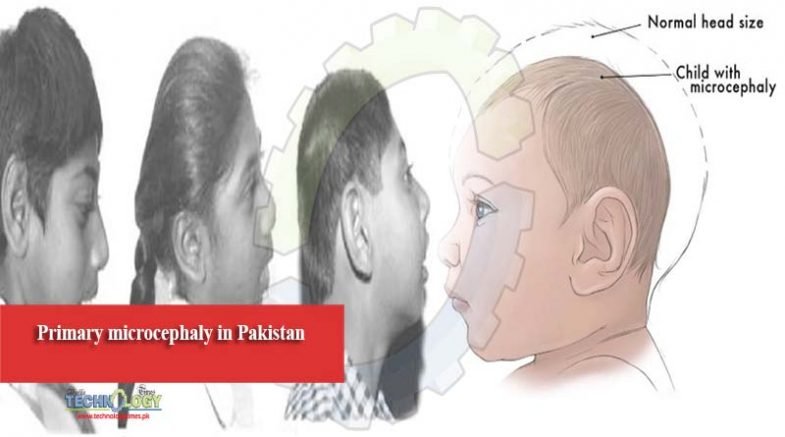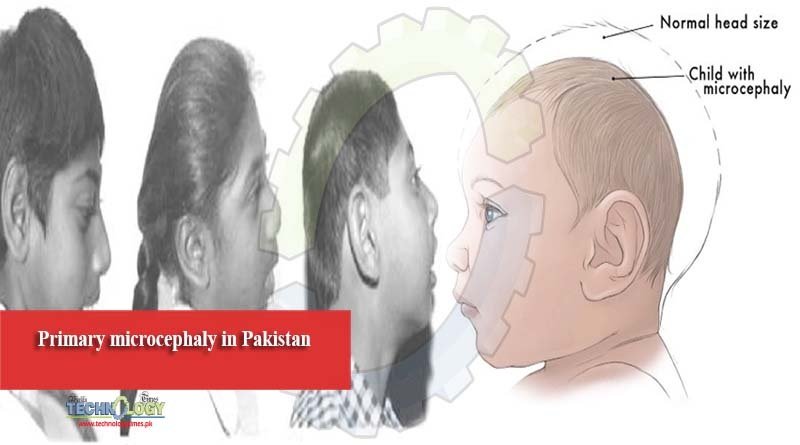Primary microcephaly is a rare genetic disorder that is characterized by a reduced head circumference than that of normal individuals of same gender and age.
 The brain size of affected individuals is one third the normal brain size. This disorder follows an autosomal recessive mode of inheritance which means that the affected child gets one allele of the causative gene from each of the parents.
The brain size of affected individuals is one third the normal brain size. This disorder follows an autosomal recessive mode of inheritance which means that the affected child gets one allele of the causative gene from each of the parents.
Primary microcephaly is congenital, that is, it is present at the time of birth. Although it is evident at 21st week of gestation; mostly the condition is recognized at the time a baby is born.
The incidence of autosomal recessive primary microcephaly is very high in Pakistan as compared to other countries. According to a report published in year 2005, the incidence rate of primary microcephaly is 1 in every 10,000 in Pakistan. It is 1 in every 250,000 in Holland and 1 in every 30,000 in Japan.
Microcephaly affected individuals are often called “ rats of Shah Dhola” in Pakistan. A clear association has been established between primary microcephaly and consanguinity (cousin marriages) which explains the fact that the prevalence of this condition is much higher in areas where consanguinity is a common social practice as in Pakistan.
It is very important to note that primary microcephaly is not just a disorder of smaller head circumference, it is actually a neuro developmental disorder in which the brain size is reduced. The microcephalics also have mental retardation and motor delay of varied degree due to reduced brain size and lesser number of neurons.
Affected individuals often have speech delay. Since the degree of mental retardation differs from patient to patient, some affected individuals can be taught basic life matters and can live their life on their own to an extend whereas some require proper care even in adulthood.
So far 25 gene loci have been mapped for primary microcephaly, 24 of which follow autosomal recessive mode of inheritance while one gene (MCPH 18) is autosomal dominant in its mode of inheritance. The research on primary microcephaly is growing at great pace, scientists are also looking for new genes to explain the genetic basis of primary microcephaly.
The research in this field suggests that mutated genes cause an abnormal cell division due to centrosome abnormalities and problems in spindle formation during mitosis. However, the scientific community is try to find the reason that why due to abnormal cell division only the head or brain size is reduced and other parts of the body grow normally.
The most prevalent gene locus for MCPH is ASPM (abnormal spindle like microcephaly associated). Its controls the spindle orientation and is a major determinant of cerebral cortex size. Followed by ASPM, the second most prevalent gene is WDR62. Studies have also suggested an association between these two genes.
Research in primary microcephaly is very important in context of Pakistan due to its high prevalence and the fact that the disorder is non-curable because once a baby is born with microcephaly he is supposed to live with this condition throughout his life.
One reason of high prevalence of microcephaly in Pakistan is the lack or genetic counseling in the country. More than half of marriages in Pakistan are consanguineous that increases the chances of getting autosomal recessive primary microcephaly in the next generation.
Thus developing progressive mindsets, adopting genetic counseling practices, breaking stigmas that revolve around genetic disorders in the country and raising awareness can help improve the incidence rate in Pakistan.
